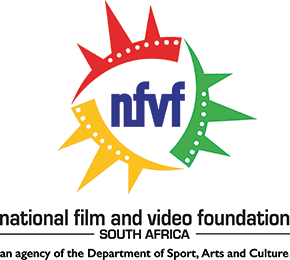.jpg)
The National Film and Video Foundation (NFVF), an agency of the Department of Arts and Culture, is once again extending a call to all South African producers to submit their films for entry into the 89th Annual Academy Awards (Oscars). The Academy has opened a call for entry for Best Foreign Language Film Award, inviting South Africans to submit their feature films for consideration.
The closing date for submissions is the 14th September 2016. The South African Academy Selection Committee will choose one film as the country’s official submission for the Foreign Language Film Award. A foreign language film is defined as a feature-length motion picture produced outside the United States of America with a predominantly non-English dialogue track.
To be eligible for entry:
1. The motion picture must be first released in the country submitting it no earlier than October 1, 2015, and no later than September 30, 2016, and be first publicly exhibited for at least seven consecutive days in a commercial motion picture theater for the profit of the producer and exhibitor. Submissions must be in 35mm or 70mm film, or in a 24- or 48-frame progressive scan Digital Cinema format with a minimum projector resolution of 2048 by 1080 pixels, source image format conforming to ST 428-1:2006 D-Cinema Distribution Master – Image Characteristics; image compression (if used) conforming to ISO/IEC 15444-1 (JPEG 2000); and image and sound file formats suitable for exhibition in commercial Digital Cinema sites.
The audio in a Digital Cinema Package (DCP) is typically 5.1 or 7.1 channels of discrete audio. The minimum for a non-mono configuration of the audio shall be three channels as Left, Center, Right (a Left/Right configuration is not acceptable in a theatrical environment).
The audio data shall be formatted in conformance with ST 428-2:2006 D-Cinema Distribution Master – Audio Characteristics and ST 428-3:2006 D-Cinema Distribution Master – Audio Channel Mapping and Channel Labeling.
2. The picture must be advertised and exploited during its theatrical release in a manner considered normal and customary to theatrical feature distribution practices. The picture need not have been released in the United States.
3. Films that, in any version, receive a non-theatrical public exhibition or distribution before their first qualifying theatrical release will not be eligible for Academy Awards consideration. Non-theatrical public exhibition or distribution includes but is not limited to:
- Broadcast and cable television
- PPV/VOD
- DVD distribution
- Internet transmission
4. The recording of the original dialogue track as well as the completed picture must be predominantly in a language or languages other than English. Accurate, legible English-language subtitles are required.
5. The submitting country must certify that creative control of the motion picture was largely in the hands of citizens or residents of that country.
6. The South African Academy Selection Committee under the patronage of the NFVF will select the South African film to be entered for consideration. Entries should therefore be hand delivered to the NFVF not later than 19th September 2016 at 16:00. Qualifying film from this initial judging phase will go forth to represent South Africa in the Academy’s initial nomination phase for Best Foreign Language film.
Foreign Language Film Award Guidelines:
The Academy uses the following guidelines to determine a film’s eligibility in the Foreign Language Award category:
1. Citizens or permanent residents of the submitting country should be represented in at least two of these categories: a. Producer(s) b. Director(s) c. Writer(s)
2. Citizens or permanent residents of the submitting country should be represented in the majority in these categories: a. Cinematographer b. Editor c. Art Director or Production Designer (whichever title designates the senior designer) d. Costume Designer e. Music Composer f. Sound Mixer
3. Citizens or permanent residents of the submitting country should be significantly represented among the major roles in the cast.
Required items per entry:
- Completed online submission forms (NFVF to provide form)
- 35mm or 70mm film print or DCP with accurate, legible English-Language subtitles. The print or DCP submitted for Awards consideration must be identical in content and length to the print or copy used in the film’s theatrical release.
- Full cast and credits list
- Brief English-language synopsis of the film
- Director’s biography, filmography and photograph
- 3 to 5 representative film stills
- A poster from the film’s theatrical release
- Original newspaper or magazine clipping advertising the film’s theatrical release.
The National Film and Video Foundation is officially recognized by the Academy of Motion Pictures Arts and Sciences to make submissions on behalf of the South African Film industry.
Eligible films should be sent no later than 19th September 2016 at 16:00 for attention:
The South African Academy Awards Selection Committee c/o Carla Dias
National Film and Video Foundation
87 Central Street Houghton 2198
CONTACT DETAILS FOR MEDIA QUERIES
Contact Person
Neo Moretlwe
Communications Coordinator
Tel: +27 11 483 0880
The National Film and Video Foundation (NFVF) is governed by the National Film and Video Foundation Act 73 of 1997 as amended by Cultural Laws Amendment Act 36 of 2001.
The mandate of the NFVF, in terms of section 3 of the Act, is:
- To promote and develop the film and video industry;
- To provide and encourage the provision of opportunities for persons, especially from disadvantaged communities to get involved in the film and video industry;
- To encourage the development and distribution of local film and video products;
- To support the nurturing and development of access to the film and video industry;
- To address historical imbalances in the infrastructure and distribution of skills and resources in the film and video industry.

